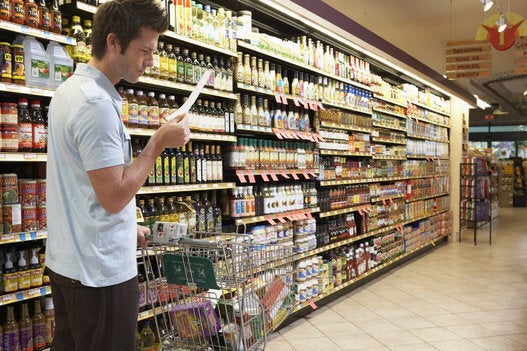
For the second time since 2007, Canada's nutrition labels are being revised. While the new labels are an important step in the right direction, I've broken down the good and the bad of what I feel, as a dietitian, are the most important changes on the labels. Remember that there are still 60 days for you to air your concerns to Health Canada if you'd like.
The Good:
Standardized Serving Sizes: Serving sizes will be standardized according to food type -- so when you go buy cereal for example, there will be one serving size that's the same on every box. This means that the serving size on the label of your Cheerios, Raisin Bran, and Lucky Charms (please no) will all be one cup or whatever serving size is decided upon, which will make it easier for consumers to compare products. The other change to the serving sizes will be that they'll be more realistic. I'm not sure who only eats one tablespoon of salad dressing on their salad, or ½ can of tuna at one time, but these and other serving sizes will hopefully be replaced with what Canadians really typically eat. Salad dressing eaters rejoice!
Exposing Sugar: Up until now, you've had to be part detective, part food scientist to detect all of the different sugars in a product. Not only have they been scattered throughout the food's ingredients on the label, but they've also been hidden in language that the layperson might not understand. Anhydrous dextrose, barley malt, and molasses are only three of the 57 possible names for sugar that can be used on a label.
The proposed nutrition labels will group all of the sugar-containing ingredients in one part of the label, so consumers can easily identify them. The labels will also contain a per cent daily value (DV) of sugar based on Health Canada's recommendation of 100 grams per day.
Different Look for the Label: The label itself will be bolder, with calories right at the top of the label. The ingredient list will be bolded and easier to find on the product's package.
The Bad:
No Added Sugar Line: What happened to the line for added sugars? I'm pretty disappointed about it being left out, because the total sugar value won't differentiate between natural sugars in healthy items such as vegetables, milk, and fruit, and added sugars, which as Canadians, we eat too much of. The added sugars in our food are really the problem sugars, so why aren't the new labels listing them separately? Fail.
Per cent DVs Are Still Totally Confusing and Unrealistic: These percentages confuse my clients the most. Most people don't realize that they are based on a 2000 calorie diet, so if you're not a person who needs 2000 calories a day, the percentages don't apply to you. There's something about percentages that automatically confuses people because they feel like they have to stand in the supermarket aisle and start doing advanced calculus. Can't we make things a bit easier for people?
The Labels Won't Change How Badly We Eat: Okay, maybe that's a sweeping generalization, but let's not expect miracles from the new labels. They're a step in the right direction, but there will always be people who couldn't care less what they eat, and people still have to take the responsibility to check the labels -- both the nutrition facts panel AND the product ingredient list -- and change their eating habits. More education about nutrition and overall health, plus realistic expectations about consumers' buying and eating behaviors, will be key to improving our food choices and determining if the new labels are effective.
There still remains a focus on individual nutrients instead of overall food quality. In addition to changing the labels, we should be teaching and empowering people to choose more label-less foods that are fresh and whole. Continuing to perseverate on "sugar" and "calories" perpetuates the vilification of individual nutrients which by themselves, don't dictate the quality of a person's diet.
ALSO ON HUFFPOST:
